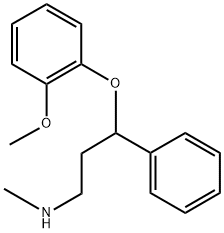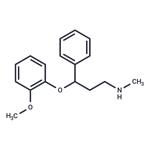Clinical Use
Nisoxetine was the initial phenoxyphenylpropylamine synthesized in the Lilly research laboratories
during the early 1970s from the rearrangement of an oxygen atom in diphenyhydramine, a
diphenylmethoxyethylamine, to a phenoxyphenylpropylamine. Nisoxetine was discovered to be a
potent and very selective SNRI, with little affinity for other receptors. It underwent clinical studies as an
alternative to Lilly's best-selling antidepressant, nortriptyline, but without the adverse effects associated with
the tricyclic secondary amines. It was never marketed, however, because of a greater interest in developing
its 4-trifluoromethyl analogue, fluoxetine, an SSRI.



